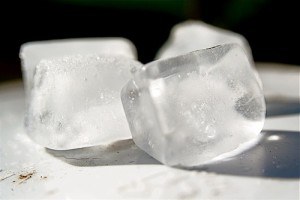One of the biggest money-saving techniques you can practice in the kitchen is to preserve foods by freezing. Whether you choose to freeze whole, raw, or single-ingredient foods – or cook an entrée for easy prep later – the opportunity to buy low and eat when foods are more expensive is an appealing one. This quick cheat sheet will set you straight on what foods do well under freezing temps, and which ones won’t hold up under ice.
Foods to Freeze
- Hard Cheese – This staple can be frozen as shreds or as a chunk. Processed slices may become soggy or fall apart during the thawing process. (While you’re at it, go ahead and freeze that extra unopened carton of milk, heavy whipping cream, and butter.)
- Pancakes – Making too many pancakes or waffles is a delightful situation to be in. Just pop the excess in a freezer bag for easy access later. Warm them up in the microwave for quick on-the-go breakfast!
- Nuts – Chopped, whole, or finely diced, most nut meats will keep their amazing fresh flavor after several months in the freezer.
- Coffee – Yep! With all the talk of coffee inflation, it might be wise to buy now and stash your savings in the deep freeze.
- Green (or red, yellow, and orange) peppers – These beauties can be expensive off-season, but washing them gently and then gutting them of the seeds is all you need to preserve peppers of all colors in the freezer. Dice them ahead of time for simple omelets when you need them, or freeze them whole stuffed with seasoned rice! (Note: frozen peppers are best when cooked or used in hot dishes.)
Other foods that do fine in the freezer include: Cooked eggs (white mixed well with yolks), whole berries, homemade and store-bought breads, cookies, muffins, most soups and stews (not cream-based), cooked roasts and briskets (in their own juices, a prepared gravy, or BBQ sauce), and tortillas.
Foods to Avoid Freezing
- Soft Cheese – Cream cheese, Neufchatel, and some fancier cheese will separate in freezing temps, making your meals slimy. It’s OK to use it in a recipe and then freeze (like a casserole.)
- Mayonnaise – Treat this creamy ingredient as you would the soft cheese. It will do nicely mixed into a recipe, but won’t hold up on its own.
- Potatoes – Baked or raw, these tend to either turn a horrific black color or just turn to mush when defrosted. A few potato dishes can be frozen under careful treatment (twice-baked, for example), but it’s wise to do research on your particular potato recipe before subjecting it to the big chill.
- Lettuce – Have you seen what happens to a head of lettuce when the produce crisper in your fridge gets too cold? The not-so-pretty result is exactly why you shouldn’t allow your lettuce or cabbage to ice over. Soggy, wet, and mushy will always be the result.
- Cooked pasta – Spaghetti noodles will not be the same after being frozen, so don’t even try! If you’re determined to make that penne, ziti, or manicotti survive a few months on ice, be sure that it is completely submerged in a sauce (red, not cream), and eat it after no more than 1-2 months in storage.
Other foods that don’t pass the freeze test include: tomatoes, egg whites, fried foods, and jello.
The best way to know how unknown foods will react to the freezer is to test them. Play around with small amounts of your favorite recipes, and try freezing individual portions on a cookie sheet for an hour before putting them into a freezer bag or container. (This will keep them from sticking together.) It’s also important to account for the expansion of liquids. Milk, juice, and soups will take up more room after they’ve frozen (about 10% or so.) Make sure the container has some room left in it!
What foods do you like to freeze?

